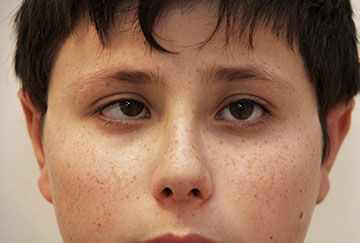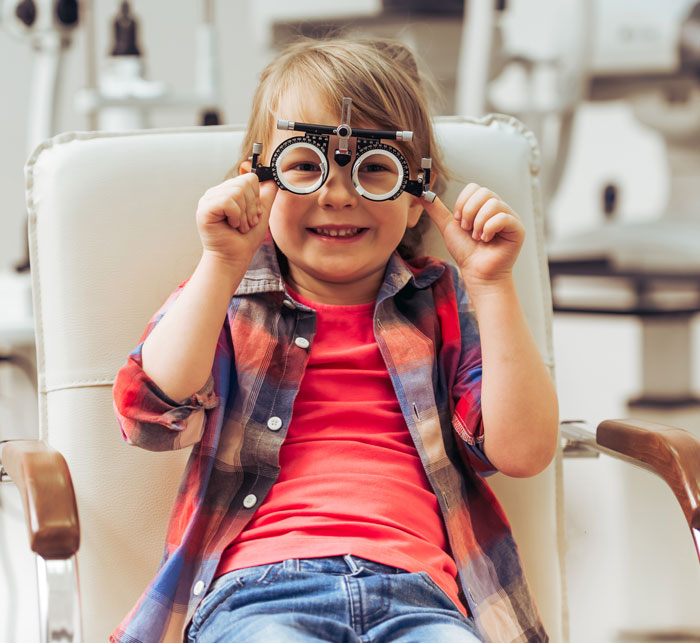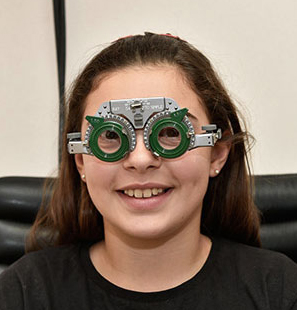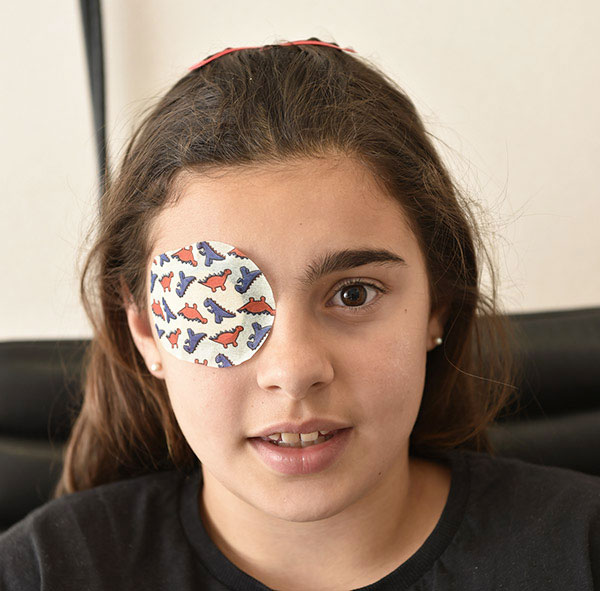Amblyopia (lazy eye)
What is amblyopia?
Amblyopia (known as lazy eye) is an uncorrectable visual loss with no pathological cause. It is very important to detect amblyopia during childhood, as the prognosis improves if treatment is started early

If amblyopia occurs before the age of 8-9, there is an increased chance of recovery.
Causes of amblyopia
Deprivation: When something is covering the light entering the eye. This may be caused by closed eyelids (ptosis), cornea problems (dystrophy) or the crystalline lens (congenital cataracts).
Strabismus: If you have strabismus, the brain suppresses the image from one eye so you don’t get double vision. This suppression leads to amblyopia.
Anisometropia: If there is a large difference in refraction error between the eyes and this is not detected or treated, it may cause amblyopia.
High bilateral refraction error: If this is not corrected, it may lead to bilateral amblyopia.

Strabismus can lead to amblyopia.
Types of amblyopia
- Strabismic amblyopia: This is the most common form and may be associated with any type of strabismus except if it is alternating (when the deviating eye alternates).
- Refractive amblyopia: Linked to high refractions, frequently together with anisometropia.

Evaluation
Diagnostic techniques
Testing visual acuity: The size of the smallest writing a patient can see is measured. Simple images are used for children. In patients with amblyopia, one or botheyes have a reduced visual acuity.
Detection of refractive errors: We measure the amount of the correctable refractive error of the eye (the prescription level for glasses)
Cover test: An objective test to determine the presence and amount of ocular deviation. Strabismus may lead to amblyopia.
Stereopsis: A sensory test to study heightened or 3D vision capacity. There are different tests to evaluate stereopsis. In amblyopia, it will be reduced.
Visual acuity test.

Refractive measurement.
Depth perception with the stereopsis technique.
OTHER SPECIALITIES
Amblyopia treatment
- Adequate optic correction to provide a sharper retina image.
- Patch occlusion of the eye without amblyopia to stimulate the eye with amblyopia.
- Impairing the eye without amblyopia using filters, eye drops (atropine) or optic correction, in order to stimulate the eye with the visual impairment.
- Surgery in cases of deprivation (cataracts, ptosis) or in some cases of strabismus.

Frequently Asked Questions
Early detection and immediate treatment are crucial for amblyopia. If it is treated before the age of 8-9, the chances of recovery are high. After the age of 10-12, the chances of treatment being successful decrease significantly. However, successful treatment at this age is not impossible.
Any ocular anomaly that is not diagnosed early enough can hinder visual development and have lasting effects. Taking into account the fact that vision is part of the learning process, amblyopia can directly affect a child’s normal development if left untreated
- White pupils.
- Strabismus.
- They get very close to the television, or to the paper when reading or writing.
- They blink frequently or always wink the same eye.
- They squint in order to see.
- They twist their head when they want to fix their gaze.
- There is a notable difference in the vision of one eye compared with the other.
- They have difficulty reading and writing.
Related entries
What is a lazy eye?
Lazy eye or amblyopia is the partial loss of vision in one of the eyes. That is, one has normal…


